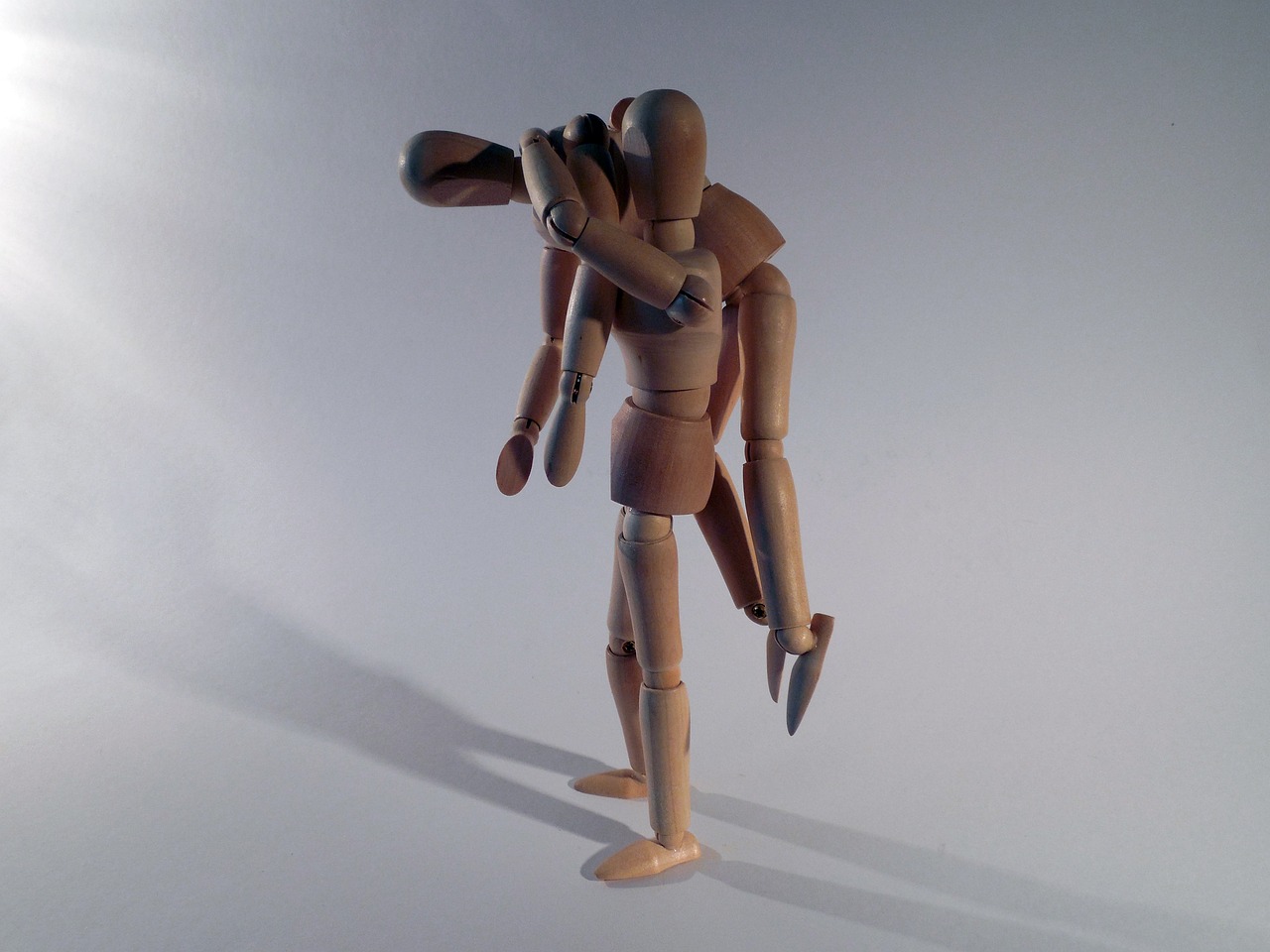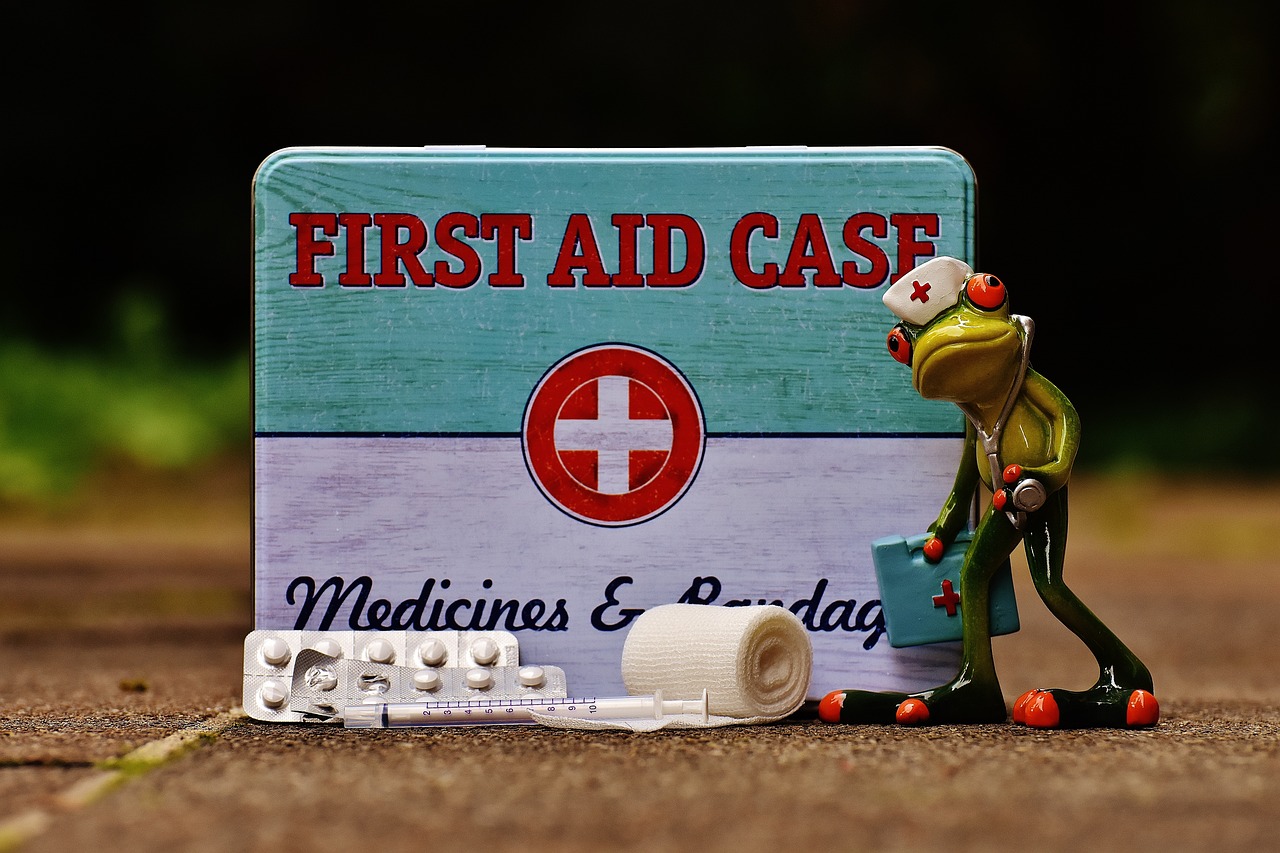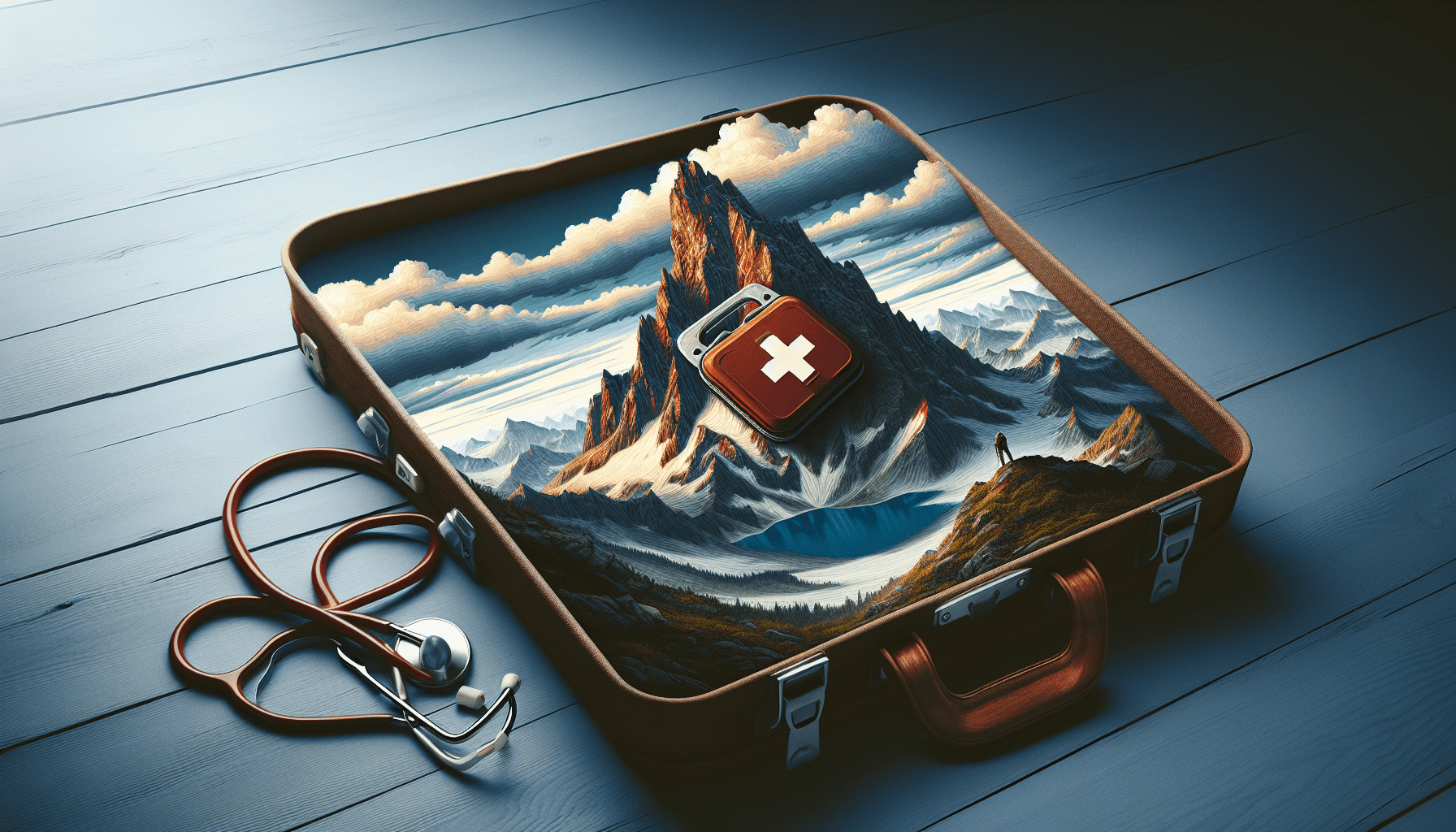In times of unexpected emergencies or when exploring the great outdoors, having knowledge of basic first aid techniques can be absolutely crucial. From treating cuts and burns to performing CPR, being prepared can make all the difference in saving a life. In this article, we will explore some of the most popular and effective first aid techniques for survival. Whether you are a seasoned adventurer or simply looking to be better prepared for any situation, this guide will provide you with essential knowledge to handle emergencies with confidence and skill.

CPR (Cardiopulmonary Resuscitation)
CPR, also known as Cardiopulmonary Resuscitation, can be a life-saving technique in emergency situations where someone’s heart has stopped beating or they have stopped breathing. Performing CPR involves a combination of chest compressions and rescue breaths to keep oxygen flowing to the person’s vital organs until medical help arrives.
Performing chest compressions
When performing CPR, chest compressions are a crucial component. To begin, place the heel of one hand on the center of the person’s chest, between their nipples. Place your other hand on top of the first hand and interlock your fingers. Keeping your arms straight, use your body weight to push down hard and fast, aiming for a rate of around 100-120 compressions per minute. Ensure that you allow the chest to fully recoil between each compression to maximize blood flow.
Giving rescue breaths
Alongside chest compressions, rescue breaths help provide the person with oxygen. After delivering 30 chest compressions, lean over the person’s head, pinch their nose shut, and create a seal over their mouth with your own. Give two rescue breaths, each lasting about one second, observing their chest rise as you blow. If the breaths do not go in, ensure you check for any obstructions in their airway and reposition their head accordingly.
Knowing when to use CPR
CPR should be initiated in situations where an individual is unresponsive, not breathing, or not breathing normally. It is particularly important to perform CPR if there are no signs of a pulse. These situations can occur due to cardiac arrest, drowning, suffocation, or severe trauma. Remember that CPR is not a substitute for professional medical care, so be sure to call emergency services immediately and continue CPR until help arrives.
Stopping Bleeding
In scenarios where there is excessive bleeding due to an injury, it is essential to be able to stop the bleeding to prevent further harm and potential life-threatening complications.
Applying direct pressure
The first step in stopping bleeding is to apply direct pressure to the affected area. Using a clean cloth or your hand, press firmly on the wound to help promote blood clotting. Maintain pressure for several minutes, allowing the blood to clot and slow down the bleeding. Using a sterile dressing, if available, can help provide better protection and absorbency.
Elevating the injured area
If the injured area allows for it, elevating the limb or body part above the level of the heart can assist in reducing blood flow to the area. This can help minimize the bleeding and allow the body’s natural clotting mechanisms to take effect. Be cautious not to elevate the injured area if it causes more pain or potential harm, such as in the case of a suspected fracture.
Applying a tourniquet if necessary
In severe cases of bleeding, such as when the bleeding cannot be controlled with direct pressure, the use of a tourniquet may be necessary. A tourniquet should only be used as a last resort, as it can have significant consequences if left in place for an extended period. If a tourniquet is required, it should be placed above the bleeding site, tight enough to completely stop the bleeding but not to the point of causing unnecessary damage. Seek immediate medical attention after applying a tourniquet.

Treating Burns
Burns can occur in a variety of situations, from kitchen mishaps to exposure to fire or hot liquids. Knowing how to treat burns promptly can help alleviate pain and potentially minimize the severity of the injury.
Cooling the burn with cold water
The first step in treating a burn is to cool the affected area with cold water. Hold the burned area under cool, running water for at least 10-20 minutes, or until the pain subsides. This helps to remove heat from the burn and reduce the depth of the burn, mitigating potential tissue damage.
Covering the burn with a clean cloth
After cooling the burn, cover it with a clean, non-stick cloth or dressing. This provides a protective barrier against dirt, bacteria, and further irritation. Avoid using adhesive bandages directly on the burn, as they can stick to the wound and cause pain when removed.
Seeking medical attention for severe burns
While minor burns can usually be managed at home with proper care, it is crucial to seek medical attention for severe burns. Severe burns include those that cover a large area, are deep, involve the face, hands, feet, or genitals, or are caused by chemicals, electricity, or radiation. In these cases, professional medical assessment and treatment are essential to prevent complications and promote optimal healing.
Dealing with Broken Bones
Fractures, or broken bones, can occur due to accidents, sports injuries, or falls. Recognizing and providing initial care for a broken bone can help alleviate pain and minimize further damage before medical help is available.
Immobilizing the affected area
When dealing with a suspected broken bone, it is essential to immobilize the affected area to prevent any further movement that may exacerbate the injury. Use splints or improvised materials like sticks, cardboard, or rolled-up magazines to provide support and stability to the injured limb. Secure the splints firmly, taking care not to cause additional pain or discomfort.
Applying ice to reduce swelling
After immobilizing the fracture, applying ice to the injured area can help reduce pain and swelling. Wrap ice packs or a bag of ice in a thin cloth and gently place it on the affected area. Keep the ice in place for about 15-20 minutes at a time, with breaks in between to prevent frostbite. Cold therapy can help decrease inflammation and minimize tissue damage.
Seeking medical help for severe fractures
While minor fractures may be managed with immobilization and basic first aid, severe fractures usually require professional medical attention. If you suspect a severe fracture, where the bone is visibly deformed, there is severe pain, or a bone has pierced through the skin, it is crucial to seek immediate medical help. Attempting to manipulate or reset the bone on your own can increase the risk of complications and further injury.

Managing Shock
In emergency situations, it is not uncommon for individuals to go into shock due to severe injuries, trauma, or emotional distress. Recognizing and managing shock promptly is vital to support the person’s wellbeing and increase their chances of survival.
Lying the person flat on their back
When dealing with someone in shock, the first step is to lay them down flat on their back, if no spinal injury is suspected. Elevate their legs slightly, ideally about 12 inches, using a cushion or folded blanket. This helps to increase blood flow to vital organs, such as the brain, heart, and lungs.
Keeping them warm
To prevent further heat loss and stabilize the person’s body temperature, cover them with a blanket or any available insulation material. This helps to reduce the risk of hypothermia and supports the body’s efforts to maintain its core temperature.
Elevating their legs if no spinal injury is suspected
Elevating the person’s legs slightly can assist in improving blood circulation and reducing the potential pooling of blood in the extremities. This technique is only recommended if there is no suspicion of a spinal injury, as moving the person could worsen their condition.
Handling Choking
Choking occurs when an object becomes lodged in a person’s airway, blocking the flow of air and making it difficult for them to breathe. Acting promptly when someone is choking can prevent further distress and potentially save their life.
Performing the Heimlich maneuver
The Heimlich maneuver, also known as abdominal thrusts, is an effective technique for dislodging an object from a person’s airway. Stand behind the choking person, place your arms around their waist, and make a fist with one hand. Position your fist slightly above the person’s navel but below the ribcage. Grasp your fist with your other hand and deliver quick, upward thrusts to the abdomen. Continue the thrusts until the object is expelled and the person can breathe again.
Delivering back blows
If the Heimlich maneuver is not effective or the person is unconscious, delivering back blows may help dislodge the object. Stand slightly to the side or behind the person and deliver firm, upward blows between their shoulder blades using the palm of your hand. Alternate between five back blows and five abdominal thrusts until the obstruction is cleared or help arrives.
Calling emergency services if necessary
If the person continues to choke or loses consciousness, it is essential to call emergency services immediately. If professional help is required, they will guide you through further steps or provide instructions until medical assistance arrives.

Treating Hypothermia
Hypothermia occurs when the body’s core temperature drops below a certain level, typically due to exposure to cold temperatures or prolonged submergence in cold water. Recognizing and providing appropriate first aid for hypothermia is crucial to prevent further heat loss and potential life-threatening complications.
Moving the person to a warm shelter
The first step in treating hypothermia is to move the person into a warm shelter or area away from cold and wet conditions. Ideally, the environment should be heated or protected from the elements, allowing the person’s body to slowly warm up.
Removing wet clothing
If the person’s clothing is wet or damp, remove it gently to minimize heat loss. Replace the wet clothes with dry, warm clothing, or wrap the person in blankets or spare clothing to help retain their body heat.
Providing warm fluids if conscious
If the person is conscious and able to swallow, providing warm fluids can help raise their body temperature. Avoid beverages containing caffeine or alcohol, as these can contribute to dehydration. Opt for warm water or warm herbal teas, if available.
Managing Heatstroke
Heatstroke occurs when the body’s core temperature rises to dangerous levels due to prolonged exposure to high temperatures or physical exertion in hot environments. Proper management of heatstroke is crucial to prevent complications and potentially life-threatening situations.
Moving to a cooler area
When dealing with heatstroke, it is essential to move the person to a cooler area as quickly as possible. Seek shade or an air-conditioned environment to help lower their body temperature.
Applying cool water to the body
To cool the body down, apply cool water or place damp towels or sheets on the person’s skin. Focus on vital areas such as the neck, armpits, and groin, as these areas help regulate body temperature.
Providing fluids if conscious and not vomiting
If the person is conscious, alert, and not vomiting, encourage them to drink cool water or other fluids to rehydrate and restore electrolyte balance. Avoid cold beverages, as they can constrict blood vessels and potentially impede the cooling process.

Administering Basic Wound Care
Proper wound care is essential to prevent infection and promote healing. Basic wound care techniques can be administered to clean and protect wounds until professional medical help is available.
Cleaning the wound with mild soap and water
To clean a wound, wash your hands thoroughly first. Gently rinse the wound with clean, running water to remove any foreign debris or dirt. Use mild soap to create a soapy lather and carefully cleanse around the wound, avoiding direct contact with the open wound itself. Rinse the area thoroughly and pat it dry with a clean towel.
Applying an antibacterial ointment
After cleaning the wound, apply a thin layer of antibacterial ointment. This helps prevent infection and promotes the healing process by creating a barrier between the wound and external pathogens. Be sure to use ointments specifically designed for wound care, following the instructions and recommended frequency of application.
Covering the wound with a sterile dressing
To protect the wound from further contamination, cover it with a sterile dressing or adhesive bandage. Ensure the dressing is large enough to adequately cover the wound and secure it in place with tape or bandage clips. Regularly check the wound for signs of infection, such as increased redness, swelling, pain, or discharge.
Recognizing and Responding to Allergic Reactions
Allergic reactions can range from mild discomfort to life-threatening anaphylaxis. Recognizing the signs of an allergic reaction and responding promptly can help mitigate potential complications and provide appropriate care.
Administering epinephrine if available
If an individual is experiencing a severe allergic reaction and carries an epinephrine auto-injector (e.g., EpiPen), administer it promptly. Follow the instructions on the device carefully, ensuring it is applied to the outer thigh. Epinephrine helps reverse the symptoms of anaphylaxis by constricting blood vessels, relaxing the airway muscles, and reducing inflammation.
Taking antihistamines if mild reactions
For mild allergic reactions, such as mild itching or localized hives, antihistamines may be beneficial. Over-the-counter antihistamine medications can help alleviate symptoms by blocking the release of histamine, the chemical responsible for allergic reactions. Follow the dosage instructions provided with the medication and seek medical attention if the symptoms worsen or persist.
Seeking immediate medical help for severe reactions
If an allergic reaction is severe or progressively worsening, seek immediate medical help. Contact emergency services and provide them with detailed information about the person’s symptoms, any known allergies, and any medications administered. Prompt medical attention is crucial in severe cases, as anaphylaxis can be life-threatening without appropriate intervention.
In emergency situations, having a basic understanding of first aid techniques can make a significant difference in the outcomes of critical situations. Remember, always prioritize your safety and the safety of those around you when providing first aid. Professional medical assistance should be sought whenever possible to ensure comprehensive care and treatment.
